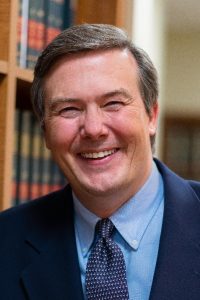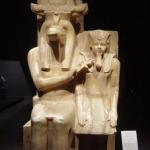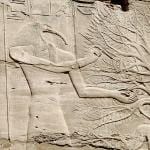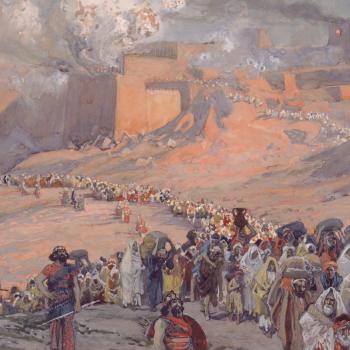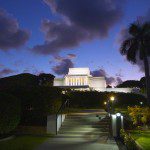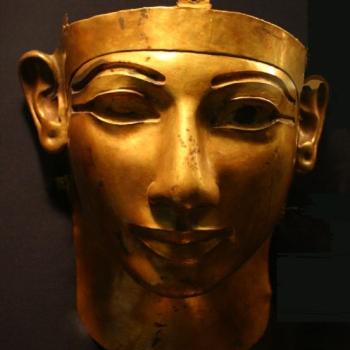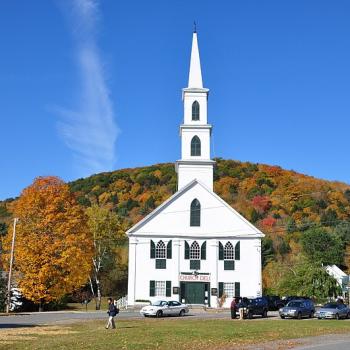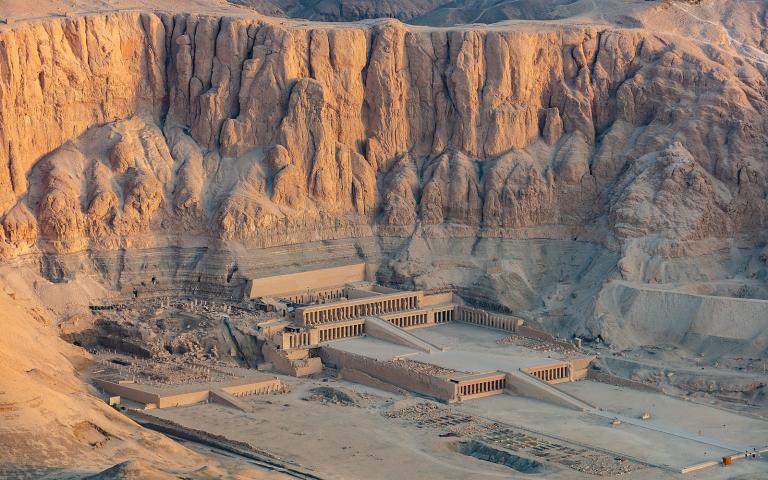
I want to call to your attention an upcoming fireside in the greater Houston, Texas, area. I anticipate that those who attend will find this presentation interesting:
Proving the Church is True
Steve Densley, J.D.
Saturday, January 20, 2024, 6:00 P.M.
Friendswood Texas Stake Center
505 Deseret Drive, Friendswood, TX 77546You are cordially invited to attend a fireside in the Houston, Texas, area featuring Executive Vice President of The Interpreter Foundation, Steve Densley, who will speak on the topic: Proving the Church is True.
Skeptics of religion and even faithful adherents often say we cannot “prove that the Church is true.” In this presentation, Steve will compare the meaning of the word “prove” as it is used in the modern American courtroom with how the scriptures use the word “prove.” We will find that, depending upon the standard of proof, it is not only possible to “prove that the Church is true” but that God expects to prove it to us and also expects us to prove it to each other.
The Interpreter Foundation has no amount in its budget that is set aide for travel by its officers, so we’re grateful for the generosity of those who are bringing Steve Densley down to Texas.
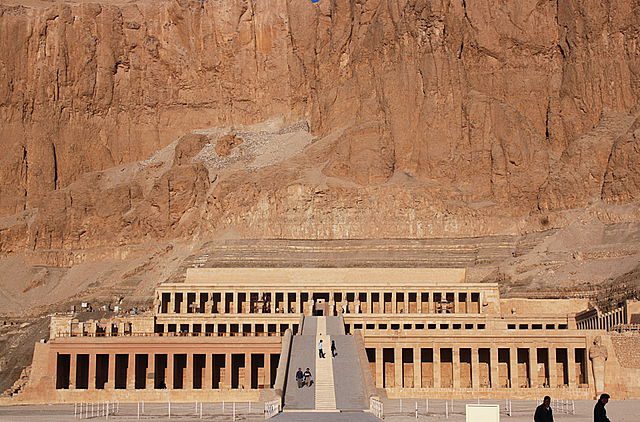
My current visit to Egypt, for example, has not been paid for by the Interpreter Foundation. None of my travel overseas (or domestically) has been covered or even subsidized by Interpreter.
Speaking of which, we were up a couple of hours before dawn this morning for a ride in a hot air balloon above the western bank of the River Nile, directly across from Luxor. Among other things, we flew over the Colossi of Memnon (the most significant remains of the once-magnificent funerary temple of Pharaoh Amenhotep III), as well as the Ramesseum, the mortuary temple of Pharaoh Ramses II — which was originally titled the House of millions of years of Usermaatra-setepenra [i.e., Ramses II] that unites with Thebes-the-city in the domain of Amon. (Pretty catchy, no?). We also had an excellent view, to the west, of the fifteenth-century BC mortuary temple of Queen Hatshepsut.
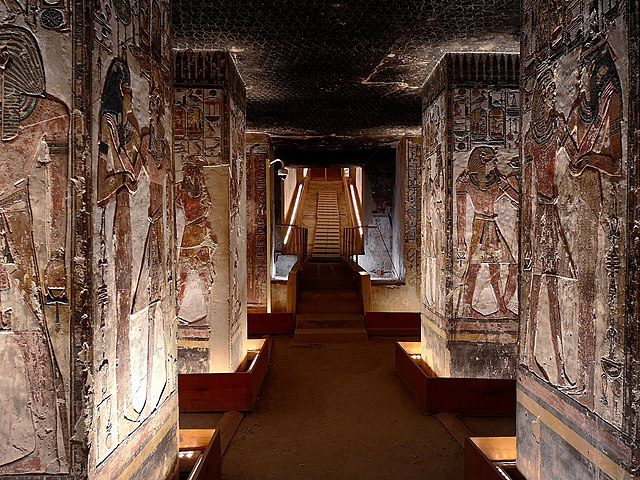
(Wikimedia Commons public domain image by Carole Raddato)
After breakfast back on our boat, we again headed across the Nile for another visit to the river’s west bank, focusing on the famous Valley of the Kings. (Inside the little tram that took us from the entrance of the Valley to the first of its tombs, above its windshield, was written فلسطين [“Palestine”] and “Free Palestine.” Beyond that, we’ve seen almost nothing connected with the current war in Gaza.)
Between the members of our group, we visited the tombs of the pharaohs Seti I (which was discovered in 1817 by the same Giovanni Belzoni who was connected with what we now know as the Joseph Smith Papyri), Ramses III, Ramses IV, Merneptah (he of the “Israel” stele that we saw the other day at the Egyptian Museum in Cairo), and, of course, the boy-king Tutankhamen. And then we dropped by an “alabaster factory” nearby where the workers always put on an entertaining show. Following lunch, some of us gathered for a simple sacrament meeting and, in the evening, our group went for carriage rides around the back streets of Luxor.
I mentioned here the other day how deeply impressed I had been by what I knew about The Other Side Academy (TOSA). Well, this trip has vastly enhanced my appreciation and admiration for what TOSA has done and is doing. We met together after dinner to share thoughts about the trip, and it was a moving occasion. Getting to know the people involved has been remarkably enjoyable, and I commend the organization to your notice. It is a living testimonial to the fact that people can change, that lives can be redeemed. It has been an honor and a privilege to have been involved with this trip, and with this group.
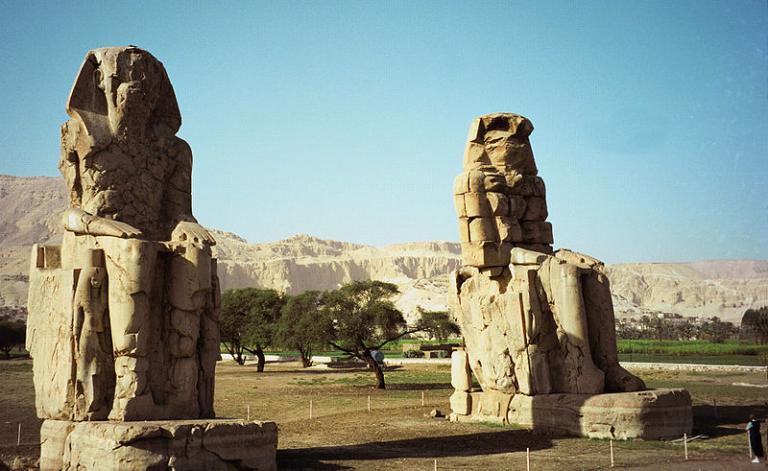
These two statues of Amenhotep III (Eighteenth Dynasty; ca. 1350 BC), which are located on the western bank of the Nile across from Luxor, are not quite all that remains of his massive mortuary temple. (Wikimedia Commons public domain photograph)
I met a traveller from an antique land,Who said—“Two vast and trunkless legs of stoneStand in the desert. . . . Near them, on the sand,Half sunk a shattered visage lies, whose frown,And wrinkled lip, and sneer of cold command,Tell that its sculptor well those passions readWhich yet survive, stamped on these lifeless things,The hand that mocked them, and the heart that fed;And on the pedestal, these words appear:My name is Ozymandias, King of Kings;Look on my Works, ye Mighty, and despair!Nothing beside remains. Round the decayOf that colossal Wreck, boundless and bareThe lone and level sands stretch far away.”
The empty tombs of the mighty pharaohs in the Valley of the Kings, and the great but empty pyramids of their royal predecessors, also summon up such thoughts, and put me in mind of the first chapter of the biblical book of Ecclesiastes:
2 Vanity of vanities, says the Preacher,
vanity of vanities! All is vanity.
3 What does man gain by all the toil
at which he toils under the sun?
4 A generation goes, and a generation comes,
but the earth remains forever.
5 The sun rises, and the sun goes down,
and hastens to the place where it rises.
6 The wind blows to the south
and goes around to the north;
around and around goes the wind,
and on its circuits the wind returns.
7 All streams run to the sea,
but the sea is not full;
to the place where the streams flow,
there they flow again.
8 All things are full of weariness;
a man cannot utter it;
the eye is not satisfied with seeing,
nor the ear filled with hearing.
9 What has been is what will be,
and what has been done is what will be done,
and there is nothing new under the sun.
10 Is there a thing of which it is said,
“See, this is new”?
It has been already
in the ages before us.
11 There is no remembrance of former things,
nor will there be any remembrance
of later things yet to be
among those who come after.
Truly, there is nothing lasting in this world. Happily, though, I’m neither a cynic nor an atheist. I rejoice in the promises of the Gospel of Christ.
Posted from Luxor, Egypt


